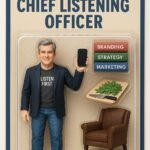For the last ten years, I believed websites were on life support. I still believe that in the near term, this marketing platform will die.
People visit websites to learn or buy something. No one wants to go through a tedious website filled with information that isn’t important.
Few companies carefully think carefully about a user’s experience when they land on a website. Big mistake.
Most follow the same framework.
And most website experiences are terrible and often a waste of time.
And when companies finish a new design, it is time to start over because technology has changed – yet again. But the customer’s needs often don’t change.
I predict that soon, someone will create speech search for websites that easily allows me to say, I want to find out if this company sells brown shoes for work. Or, I’d like to know how this company has solved X problems for customers like me.
Bye Bye Websites
If you walk into a retail store to buy a pair of shoes, you don’t want sales people popping up in your face saying, hey, want to read our newsletter? You don’t want signs pointing you in nine directions. You don’t want complexity and an overload of irrelevant product offerings.
Sometimes, you just want to find a pair of brown shoes for work.
Websites need to be smarter, more intuitive and help you solve your problem quickly. How can you make my experiences easy, satisfying and friction-free? Where is the concierge-type approach where someone asks, how can I help you and then take you right to what you need?
With voice search growing, websites must adapt. The legacy platform isn’t going to hang around forever. Change just hasn’t caught up yet but website traffic is eroding.
Death of Websites – Observations
- Websites need to do a better job of knowing what you want when you arrive. There are ways to better shunt visitors into the right bucket of interest. What can you do to improve navigation at the front door? Watch for increased use of concierge-like services that can help guide you to get you to the right place quickly.
- The conversation is on social. Traffic to corporate websites is in decline because the conversation is taking place elsewhere. As visitor traffic keeps declining, website investments will not be as automatic as they were in the past and more funds will go into social, peer and individual networks.
- Conversations need to be two-way and not static. The “online brochure” that most websites have become is old school. Customers want meaningful engagement and dialogue with brands, not to read online brochures that are outdated when posted. Think of the help desk in a physical library where you can go to get a human being to get you to the right section quickly. This type of help will occur through apps not websites.
- Websites become hubs but not homes. They can become places to point to where the conversations are taking place as their relevance diminishes. Many new startups abandon the idea of a website and jump right to apps or just living on Facebook pages. Even with the risk that Facebook will keep changing, you want to be where the customers are right now. The growth of B2B companies using Facebook instead of a website is trending. Keep an eye on this.
- Consumers are connecting to brands along the highway (Facebook, apps, etc.), not at the rest stops. (websites). Brands must find and understand a customer’s journey and show up as they walk along the road. Getting people to visit your home (website) is getting more difficult. Why not go open a pop up site where they are gathering?
- Communities are more mobile. You can’t be still and expect everyone to find you. Instead, you need to be omnipresent at all the watering holes they hang out. That means brands need to be engaged in a distributed model of reaching their audience, not just gathering everyone at home. Mobility is a mindset and brands need to stop thinking about hubs but get more engaged at the spokes.
Websites are too complicated, too confusing and difficult to navigate. They try to do too many things all at once. They belong in intensive care. Over time, I think they will be less relevant. Companies will change that $50,000 investment and ask if a few landing pages could do 80% of that heavy lifting for much less.
What job should your website do for your business and are there other ways to reach them that are most effective?
Do you need a fresh pair of eyes looking at how you spend your marketing dollars? I can help. Text me at 919 720 0955 or email me at jeffslater@themarketingsage.com Yes, it is true, I do have a website but over the last year, more of my activity marketing my business is on other platforms and I find clients where they hang out.
Photo by Kapil Dubey on Unsplash




